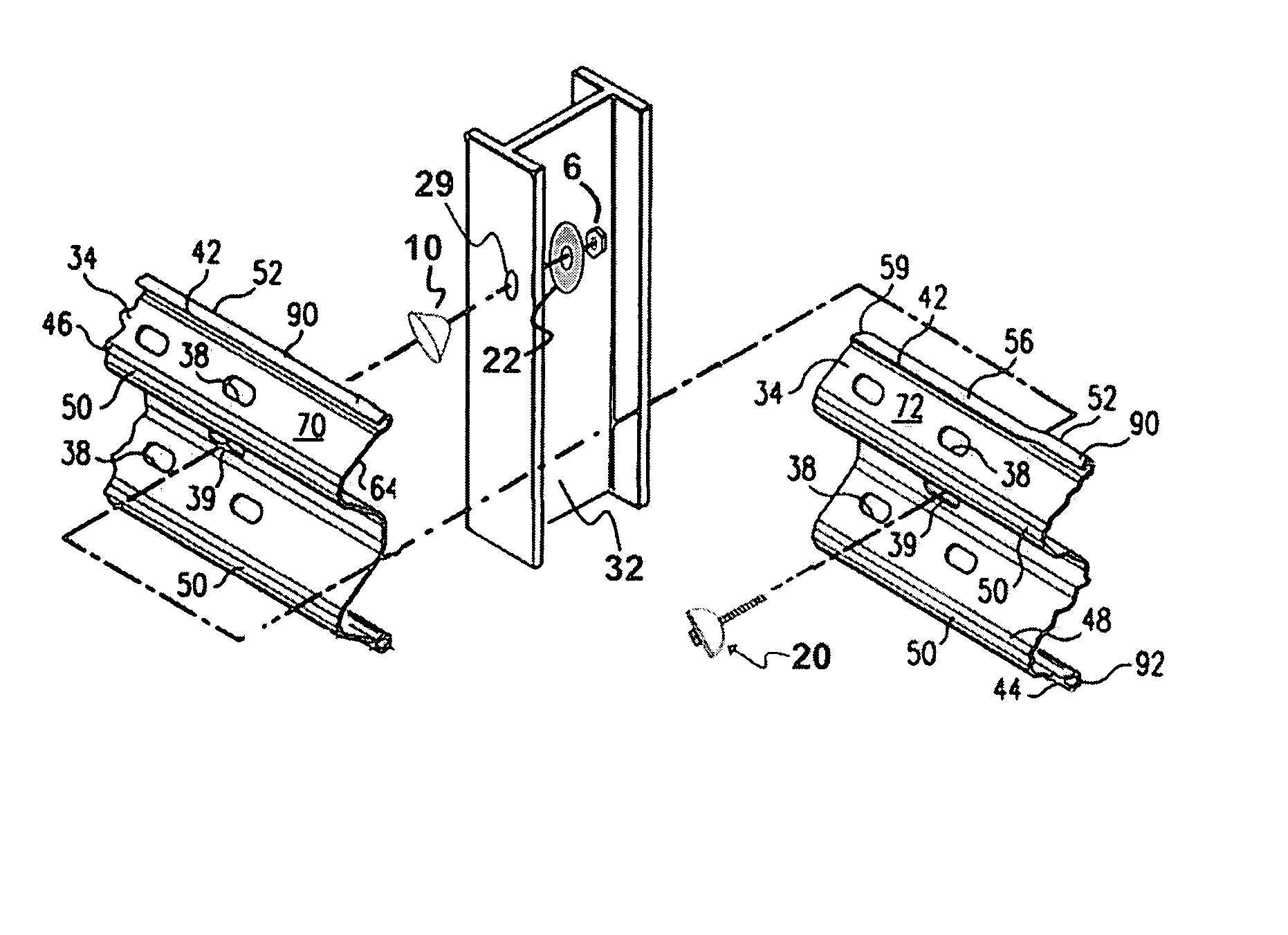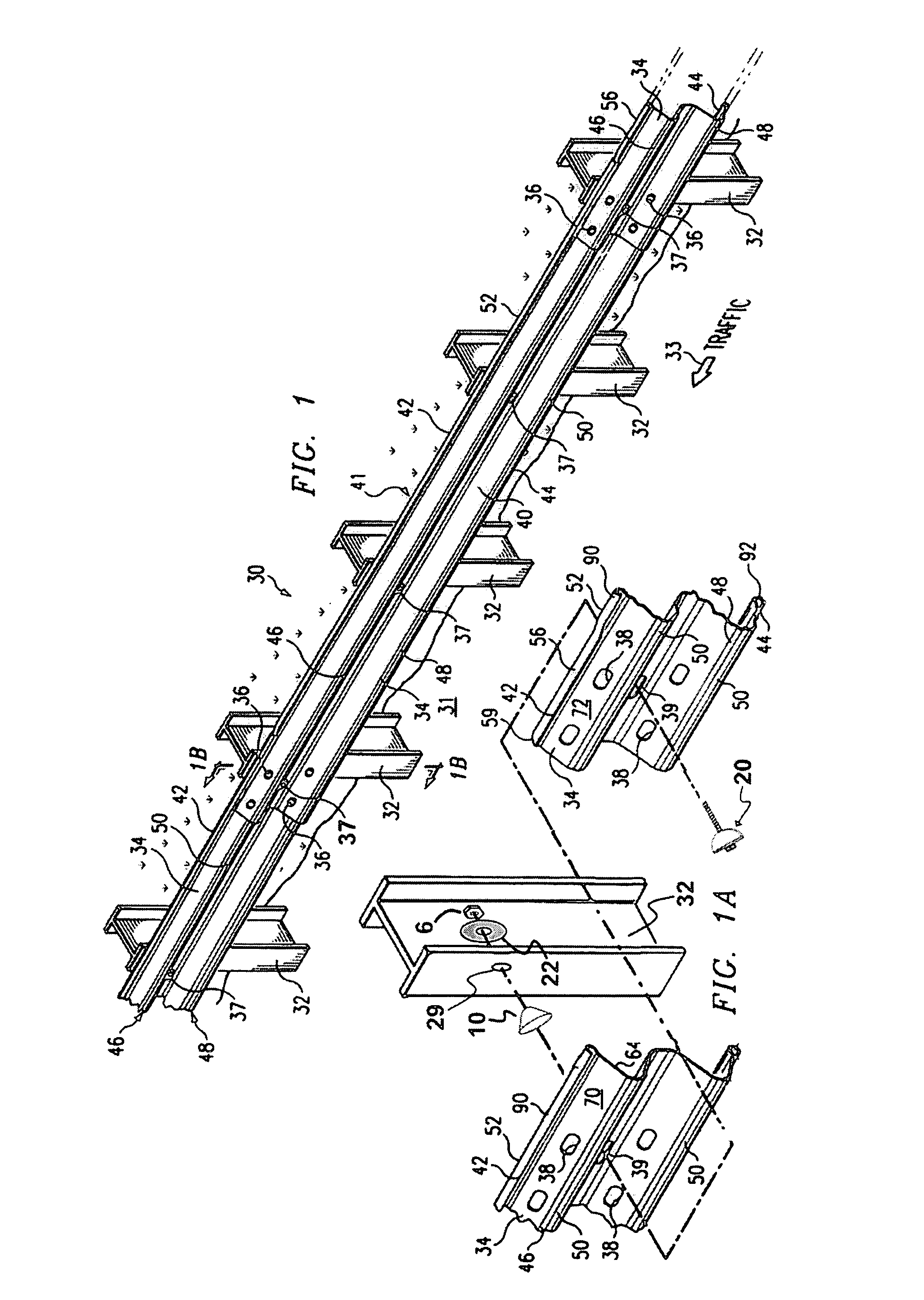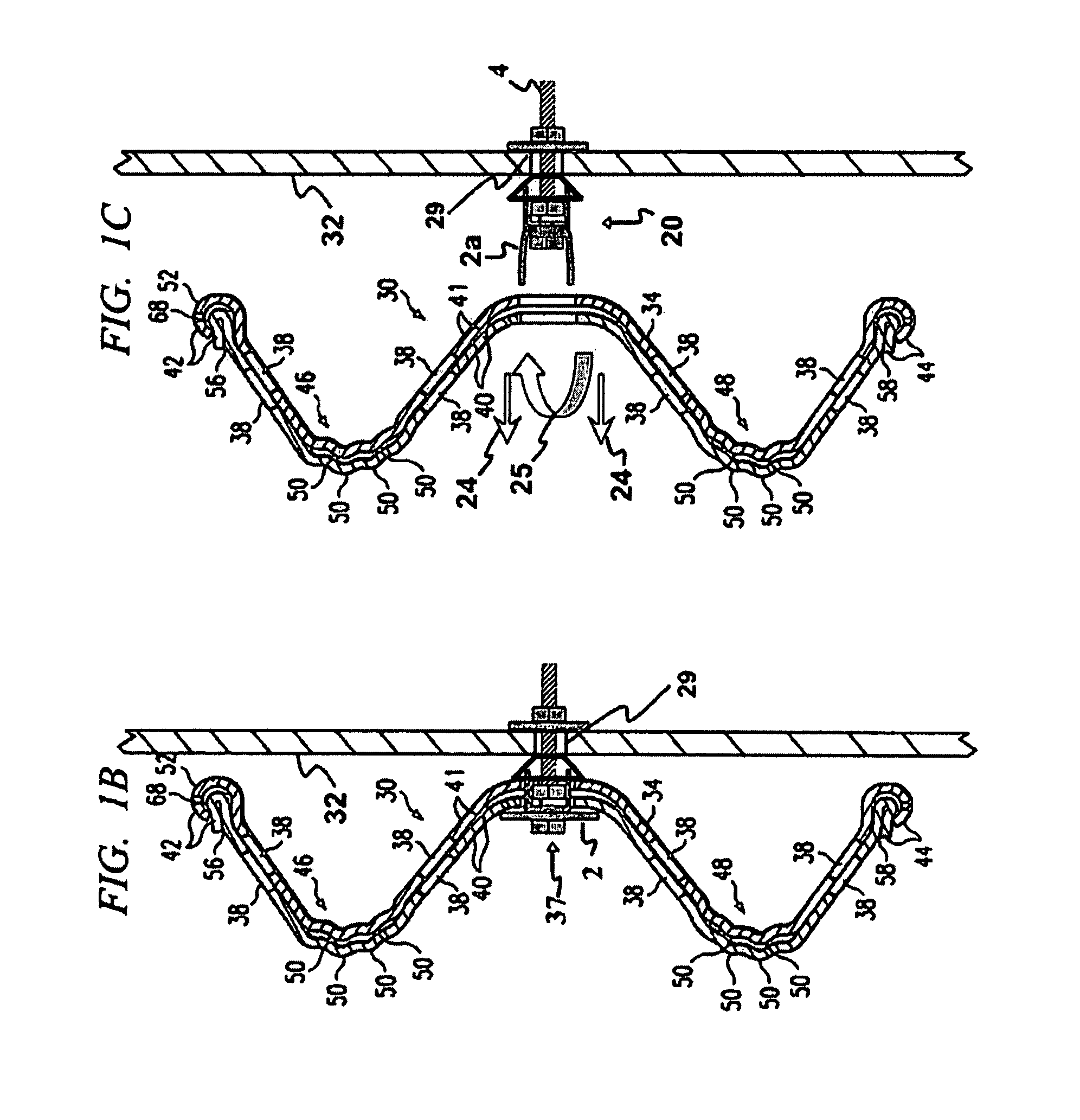Releasable highway safety structures
a highway safety and release mechanism technology, applied in roadway safety arrangements, construction, roads, etc., can solve the problems of inability to control or control the actual release mode (the way that the actual release is accomplished), the actual release mode is relatively unmanaged, and the combination of various types of loads and geometric details is not uniform. achieve the effect of adequate safety, maximum strength of the guardrail system, and stable and predictable respons
- Summary
- Abstract
- Description
- Claims
- Application Information
AI Technical Summary
Benefits of technology
Problems solved by technology
Method used
Image
Examples
Embodiment Construction
[0060]Preferred embodiments of the present invention and its advantages are best understood by referring now in more detail to the figures in which like numerals refer to like parts.
[0061]Referring to FIG. 1, guardrail system 30 is shown installed adjacent to roadway 31. The direction of oncoming traffic along roadway 31 is illustrated by directional arrow 33. Guardrail system 30 includes a plurality of support posts 32 anchored adjacent to roadway 31 by having a lower portion of each post below ground level, with a plurality of guardrail beams 34 attached to support posts 32 and secured by post bolts 37. For illustrative purposes, FIG. 1 includes one complete guardrail beam 34 and two partial sections of adjacent guardrail beams 34 to illustrate the splice connections between adjoining sections.
[0062]Guardrail system 30 may be installed along roadway 31 in order to prevent motor vehicles from leaving roadway 31 and to redirect vehicles away from hazardous areas without causing seri...
PUM
 Login to View More
Login to View More Abstract
Description
Claims
Application Information
 Login to View More
Login to View More - R&D
- Intellectual Property
- Life Sciences
- Materials
- Tech Scout
- Unparalleled Data Quality
- Higher Quality Content
- 60% Fewer Hallucinations
Browse by: Latest US Patents, China's latest patents, Technical Efficacy Thesaurus, Application Domain, Technology Topic, Popular Technical Reports.
© 2025 PatSnap. All rights reserved.Legal|Privacy policy|Modern Slavery Act Transparency Statement|Sitemap|About US| Contact US: help@patsnap.com



